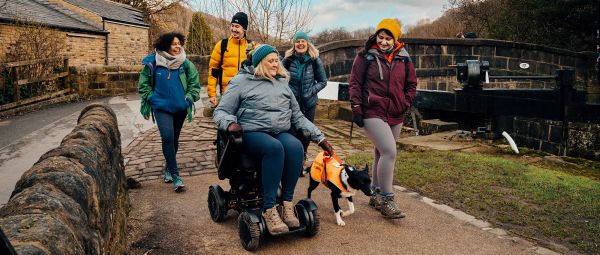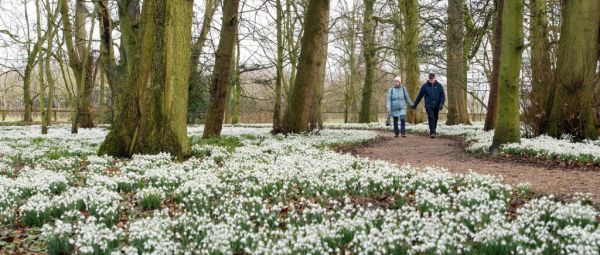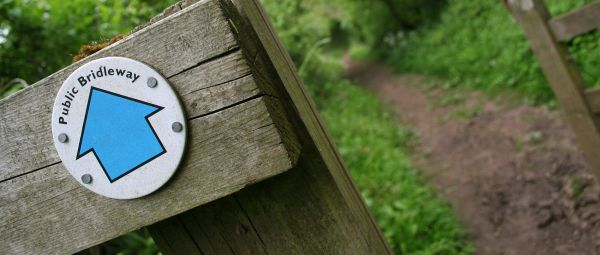Ramblers walking groups near me
Find like-minded walkers
.jpg?itok=JQii8iyD)
There’s nothing like striding out into the fresh air and discovering new trails. But even better? Doing it with other people. When you walk in a group, you open yourself up to both the natural world and human connections. You get exercise and stress relief. But you’re also surrounded by kindred spirits who want to meet people just like you.
What is a walking group?
At its simplest, it’s a group of people who get together for a walk. Usually likeminded people who love exploring on foot and meeting others.
Groups tend to cover a geographical area such as a town or region. Groups will host regular walks, sometimes multiple times a week, and often social events. Many groups offer opportunities to get involved with activities such as local campaigning and maintaining footpaths too.
You can join any group you want. And just because you’re a member of one doesn’t mean you can’t walk with another. “One of the perks of being a Ramblers member is that you can walk with any group,” says Maggi. “All the Ramblers groups I’ve walked with have been very friendly, and have welcomed me.”

Why should you join?
There are so many benefits to walking with other people. For a start, it’s great for your social life. Because you all share a common interest, you’re likely to meet people who you’ll get on with. “My other friends aren’t really into walking, so it’s been great to meet a group of people who are,” says Rachel.
You might end up making not only walk buddies but long-lasting friendships. Groups often host purely social events “We meet for drinks, we’ve had curries after walks, we’ve played cricket, gone bowling and lots more besides,” says Bhavesh of his Ramblers group. “It’s a great way to get to know the people you’re walking with even better, and I’ve found myself spending more and more time with my fellow walkers.”
Group walks are a good way to learn more about your local surroundings. You’ll be led by people who know the area and you’ll discover places you would never have thought of visiting. Also, should an accident occur, it’s comforting to be with people who have first aid and navigation skills.
“Joining the Ramblers has taken me to lots of new places and it’s helped me explore the countryside around my new home,” says Luke. “It was like getting an exercise and social package all rolled into one, and it really boosted my confidence about moving to a new city on my own.”
Indeed, walking groups are good for your health, both physical and psychological. Experts recommend getting active for at least 150 minutes a week. A 25-minute daily walk is enough to reduce the risk of serious diseases by up to 60%. Even walking at a gentle pace can help prevent conditions such as heart disease, strokes and diabetes. Signing up to a group means you’re more likely to commit to regular exercise.
The mental health benefits are just as profound. Walking has been proven to make you happier and less anxious, and reduces the risk of depression. Walking in a group offers the mood-boost of human company too.
“I feel content when I’m walking with my group,” says Lisa . “I have comrades to talk to and share with, or I can walk in silence and just ‘be’. Being out in the elements away from phone screens and the noise of life feels good for my soul.”

Walking group FAQs
Am I too old? Or too young?
No. Age is no barrier to joining a walking group. “Before I joined the Ramblers I thought it was exclusively for retirees, but it isn’t!” confirms Lisa . “There are groups to suit all ages.”
Many groups have no age restrictions. Some are aimed at certain demographics, such as 20-30-year-olds or 40-50-year-olds but there are no hard and fast rules. Some groups run walks on which children under 18 can join for free when accompanied by a guardian.
The main message is, no matter your age, you will find a group for you.
Am I fit enough?
Walking is a gentle, low-impact activity that requires no special training. You don’t need to be a mountain goat to join a walking group. Most groups will offer walks of different lengths and levels to help newcomers develop their confidence and ability. Walks are likely to be graded according to difficulty, which will be based on factors such as gradient, distance and type of terrain. This will make it easier to judge whether a walk is for you. If you’re unsure, err on the side of caution to start.
The best thing is, by joining a walking group you are more likely to go on regular walks. Over time, this will improve your fitness.
Do I have to buy lots of kit?
You don’t need lots of fancy or expensive equipment to join a walking group. If you’ve got a waterproof jacket, a full water bottle and a pair of good, sturdy walking boots or shoes, you’re pretty much good to go. Warm layers, a hat and a rucksack will be useful too. One tip: it’s best not to wear jeans! They absorb rain and sweat, leaving you sticky, chaffed and potentially very cold.
Is it cliquey?
No. Walkers tend to be an open, encouraging bunch. “At the start of my first walk the group leader introduced themselves and asked those of us who were new to raise our hands, and then throughout the walk I had members of the group come and find me to introduce themselves and welcome me,” recalls Lisa . “This happened for my first few walks, the group was really good at making sure people felt welcomed and integrated.”
What happens on a walk?
The walk details will be posted in advance, including timings, distance and meeting arrangements. You can contact the walk leader if you have questions. Most groups will try to organise car-sharing with members sharing costs such as bridge tolls, parking and fuel. Many walks will be accessible by public transport.
On the day, the walk leader is in charge. There may be a designated back-marker too, to ensure no one is left behind. Typically there will be several stops for rests, snacks, a picnic or occasionally a pub lunch. There will be plenty of chances to mingle with other members. You might even finish up in a pub or tearoom for a post-walk chat.
Great! How do I join?
You can look for walking groups using the Ramblers Group Finder search. Each group has its own info page, with details of how you can get in touch.
Non-members can join up to 3 walks before committing, so you can try before you buy. Become a Ramblers member here. Being a member enables you to join any Ramblers walking group.
“Walking gives me the freedom to exercise and spend time with enjoyable company – the feel-good factor is amazing,” says Jeanette. “And it is so cheap to get started!”
All images © Getty

How can walking improve my mental health?
Taking a regular stroll can make you feel happier, calmer, less stressed and more energetic. It’s even better enjoyed with a group of like-minded walkers.

10 best dog walks
Great places to explore with your four-legged friend, from thrilling heights and fantastic forests to sweeping beaches.

Understanding public rights of way
Discover where you can walk on paths and other rights of way across England, Wales and Scotland by following our guide.

Campaign with us
We campaign to remove barriers to walking and we step up to protect the places we love to wander.